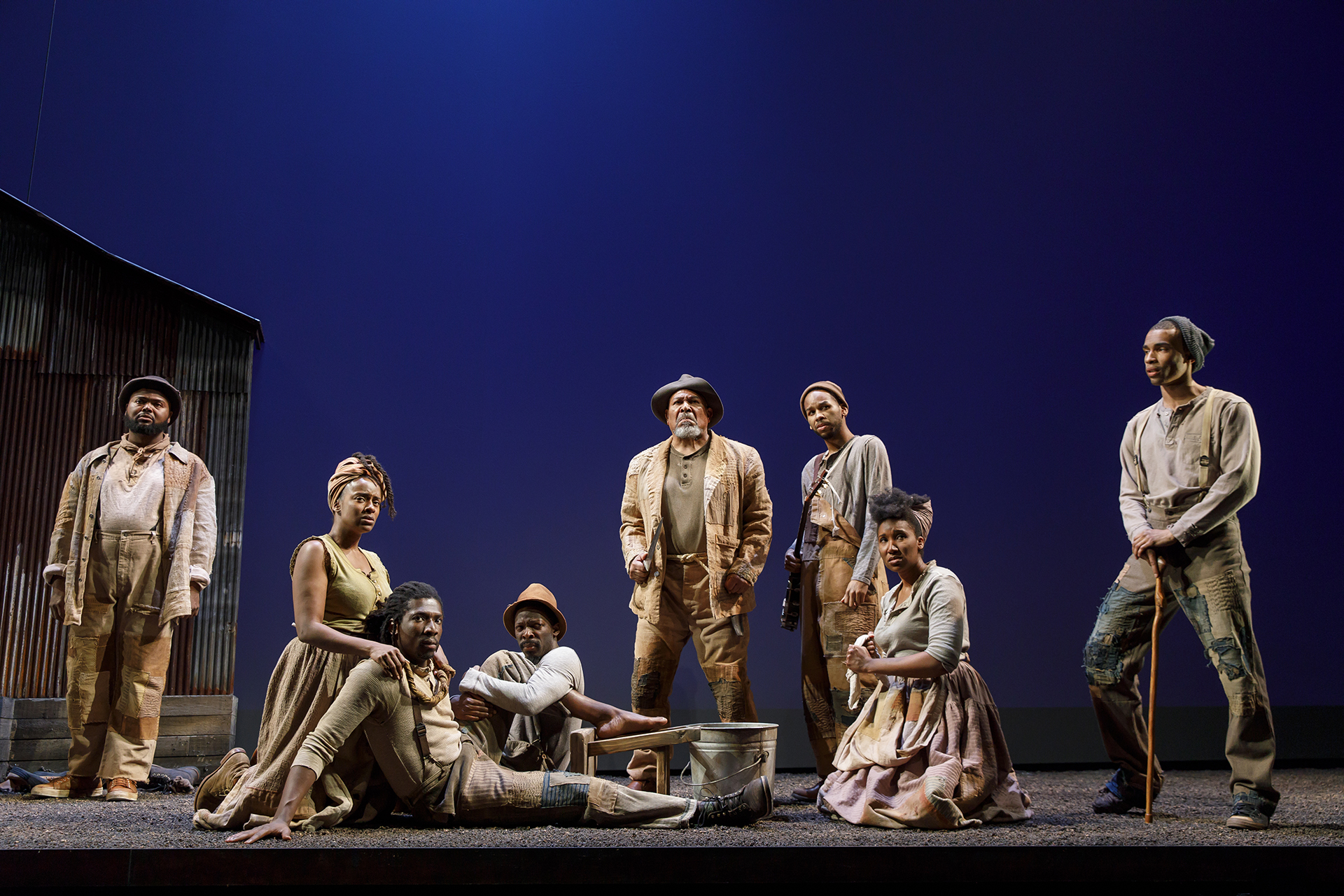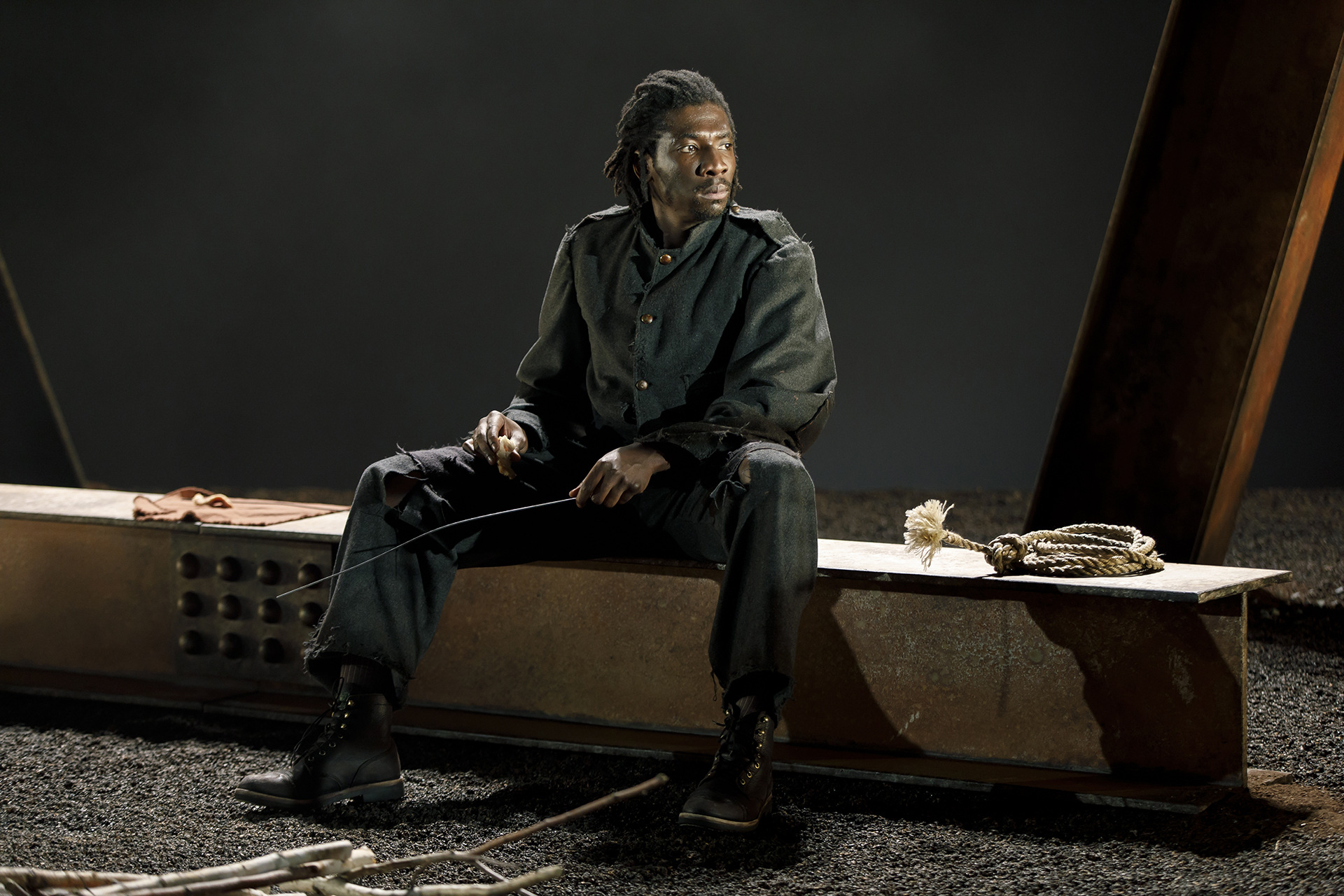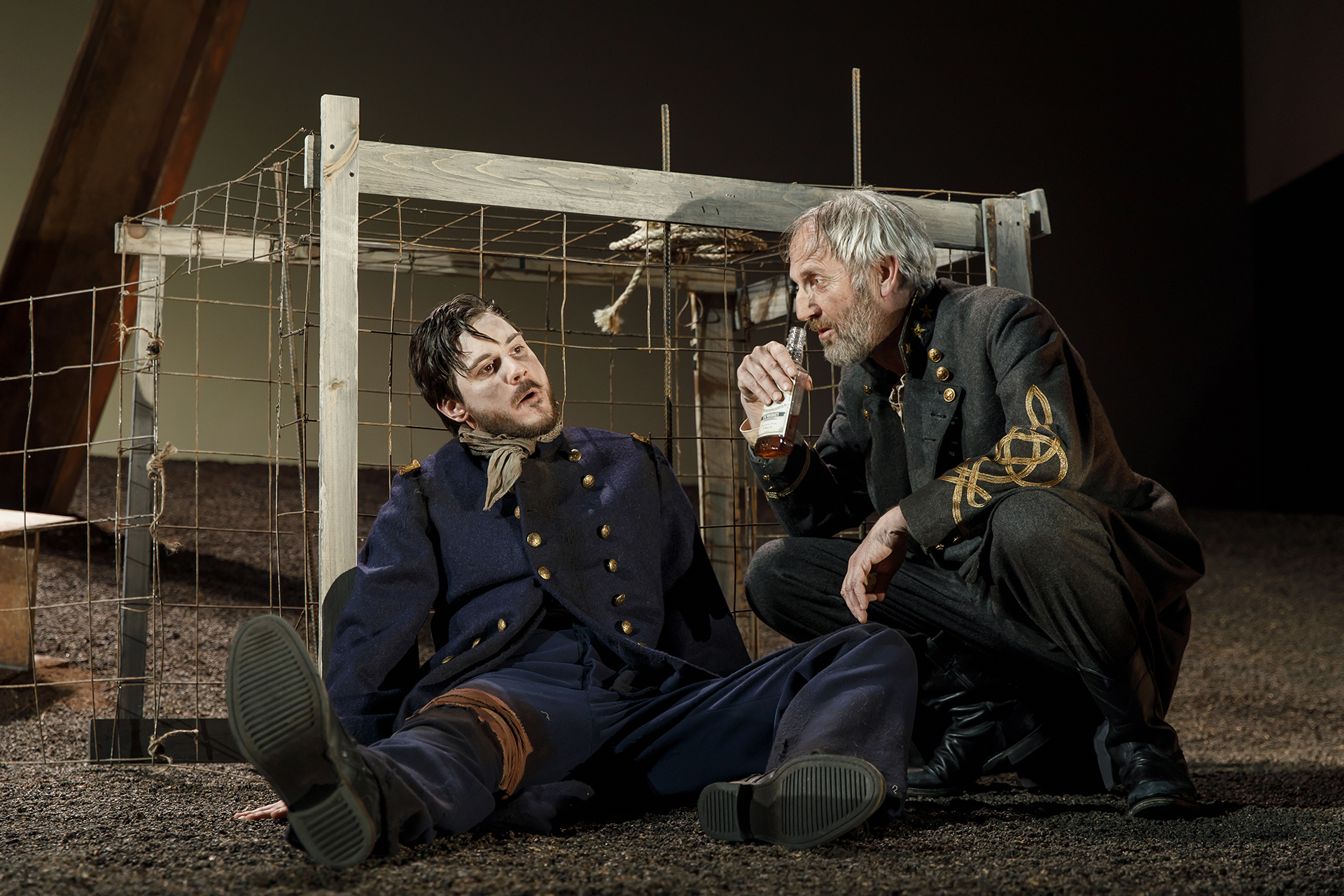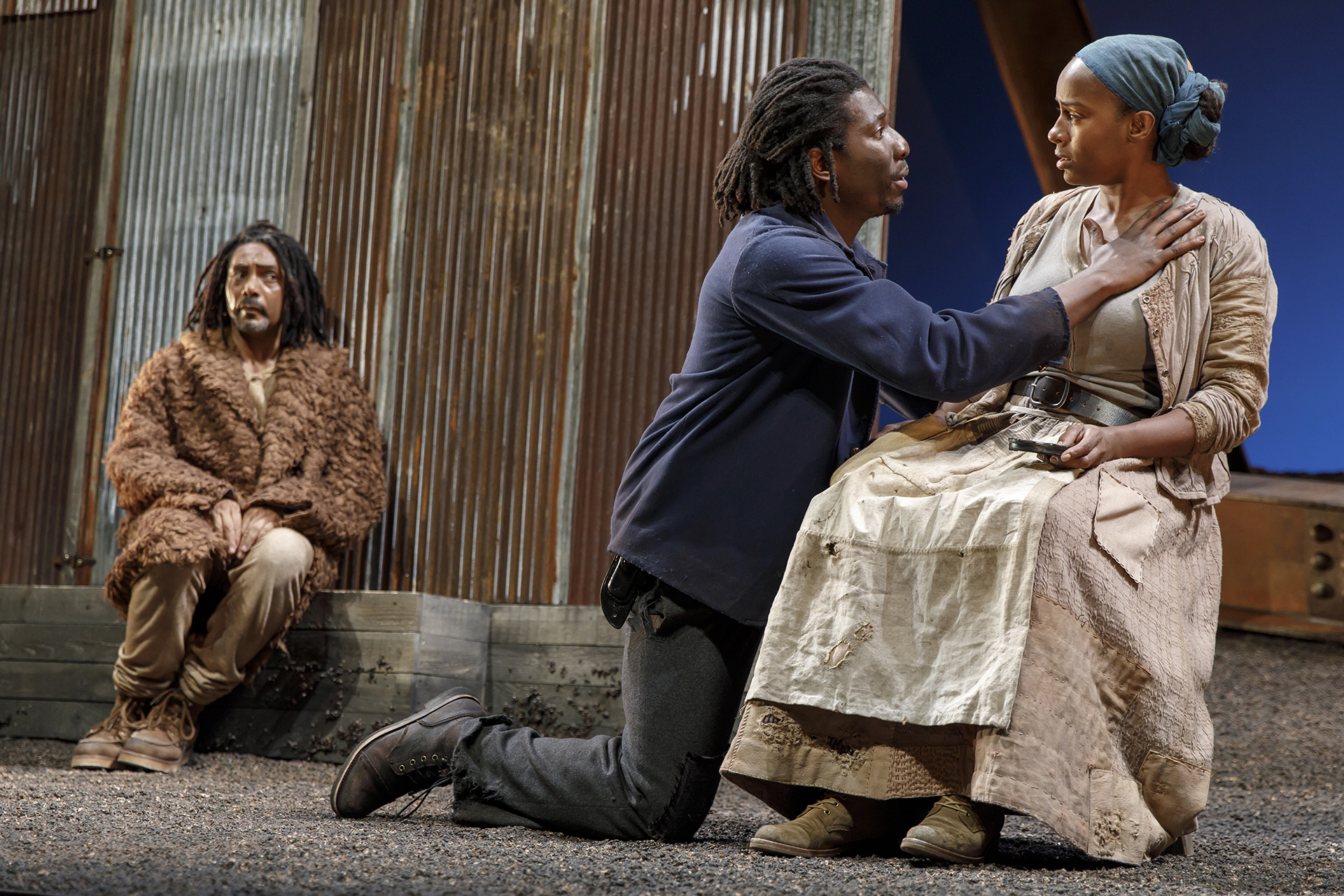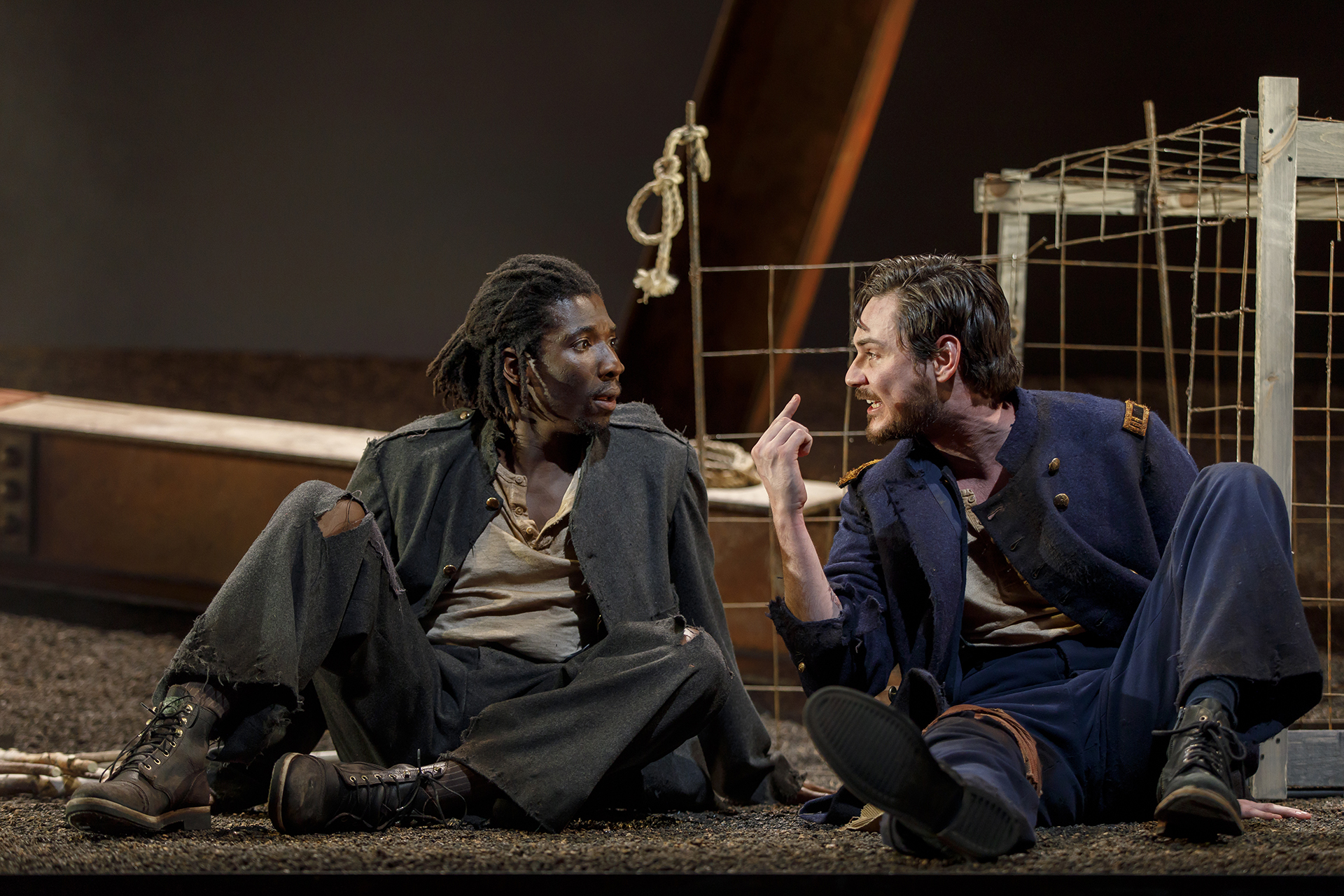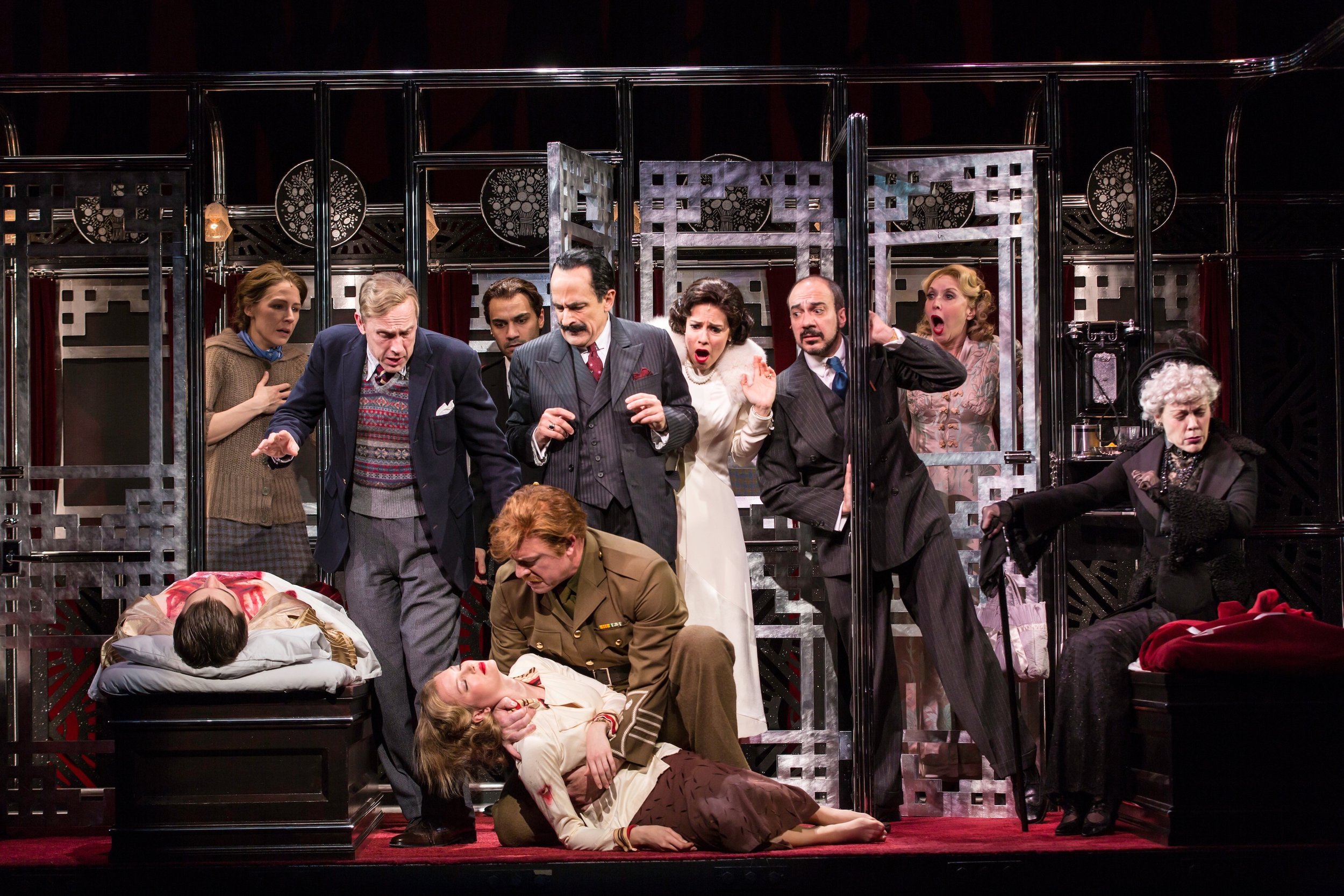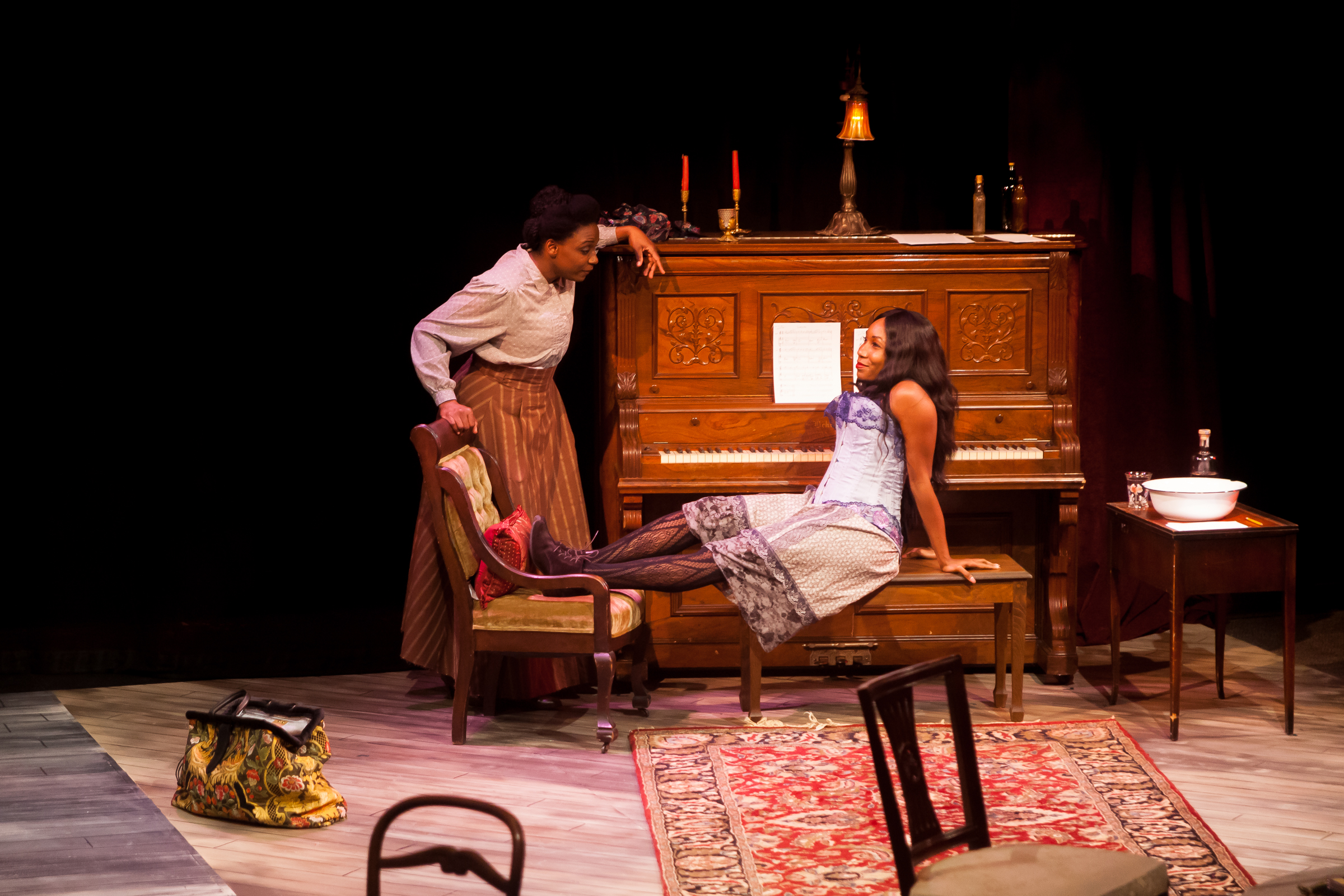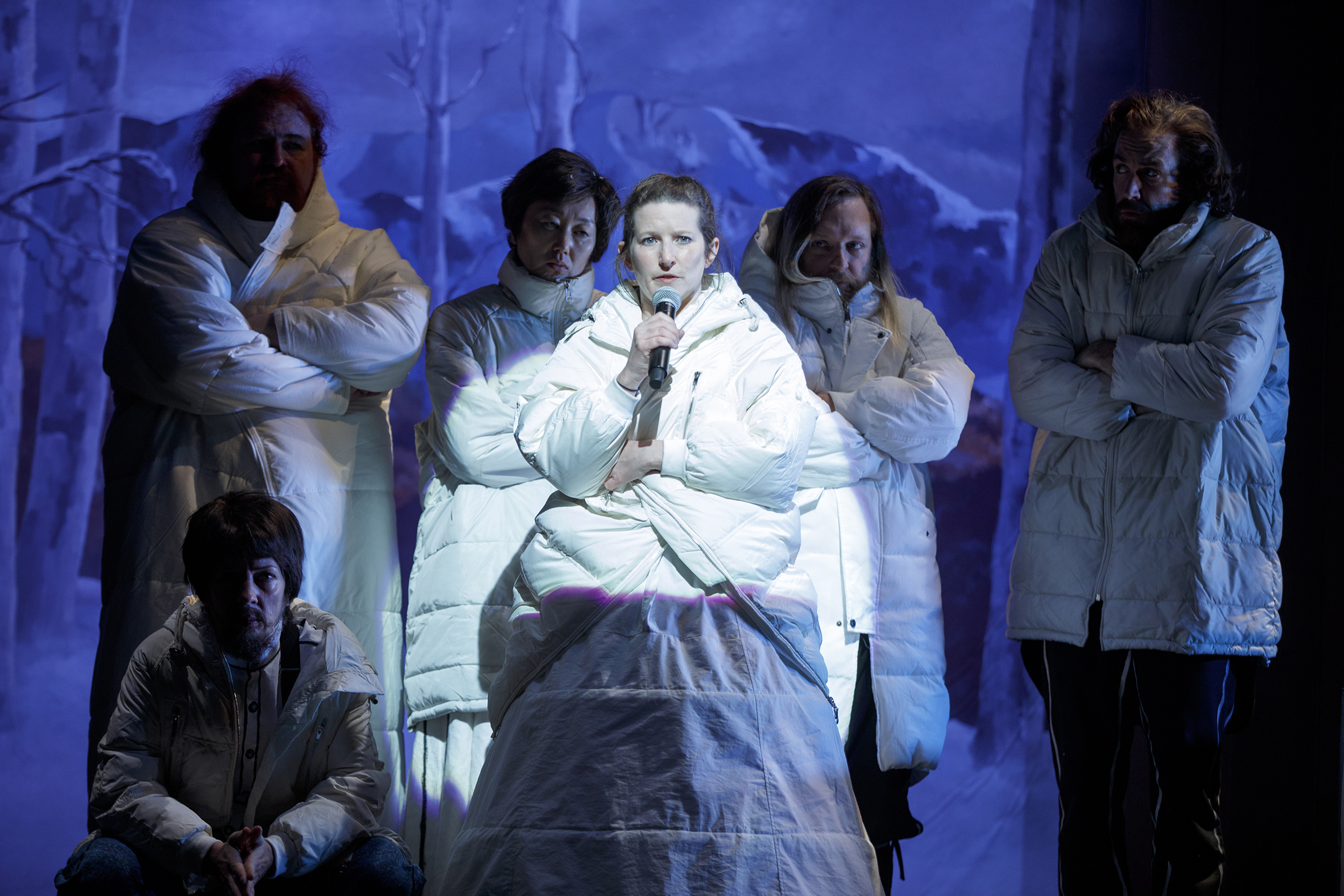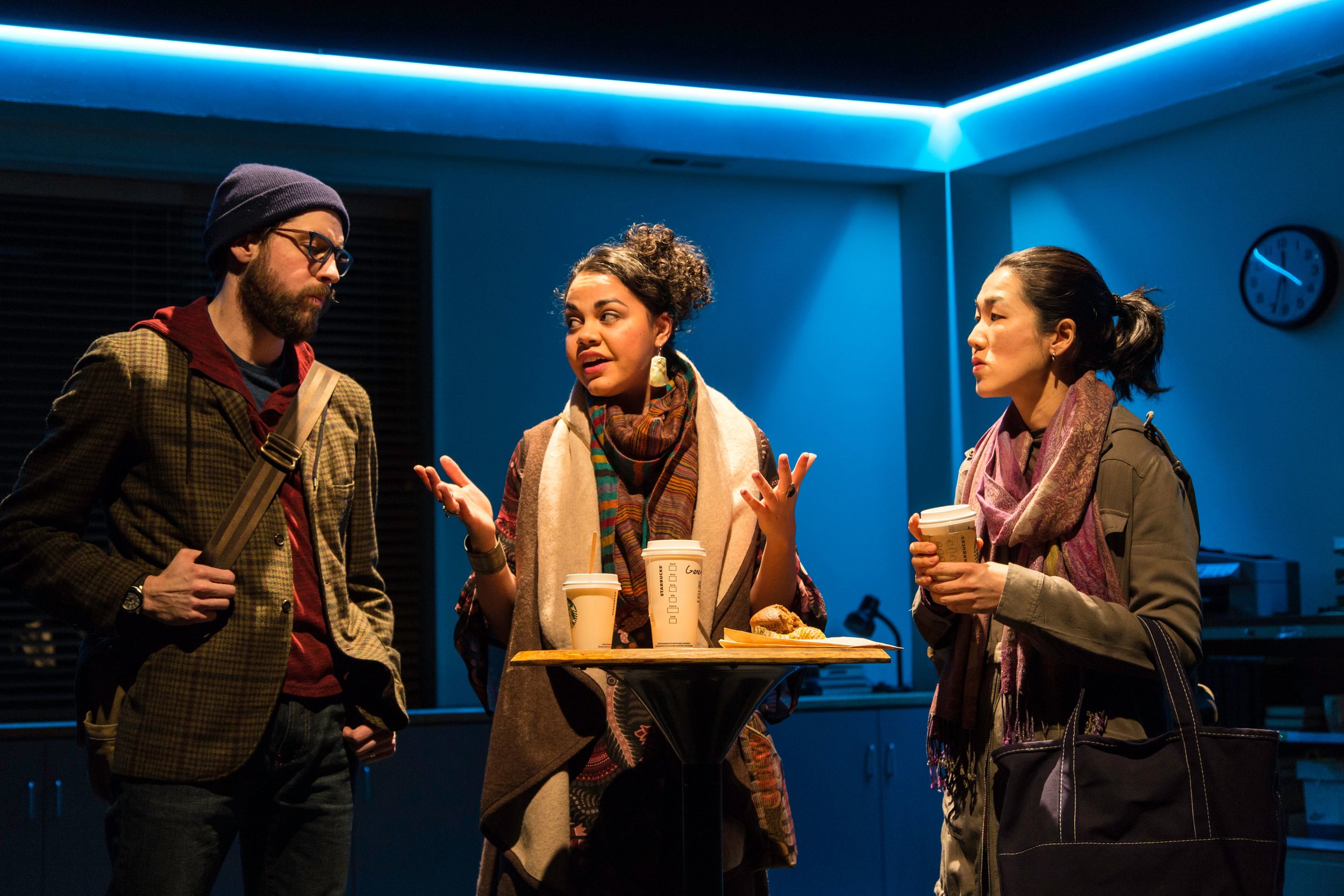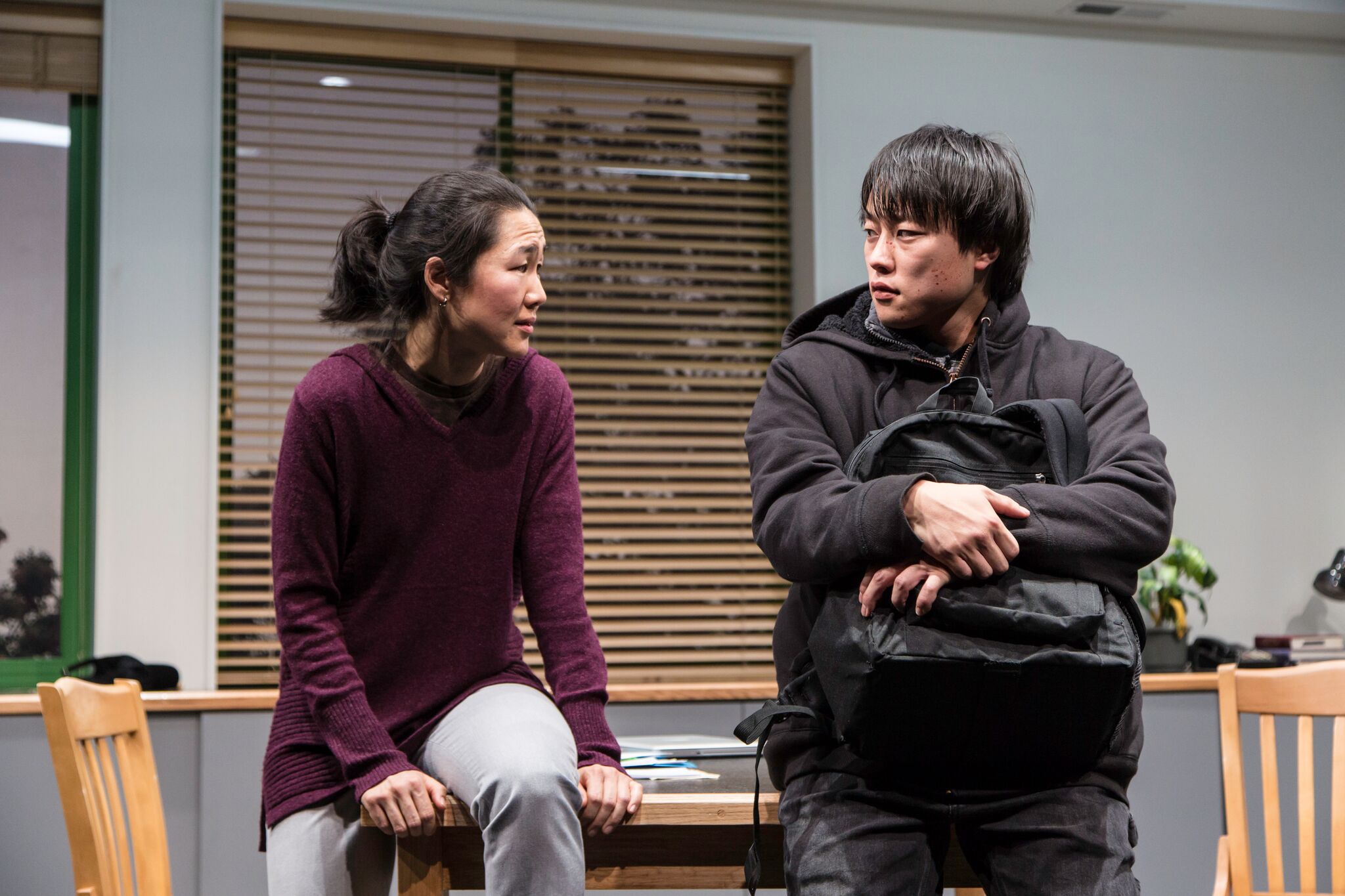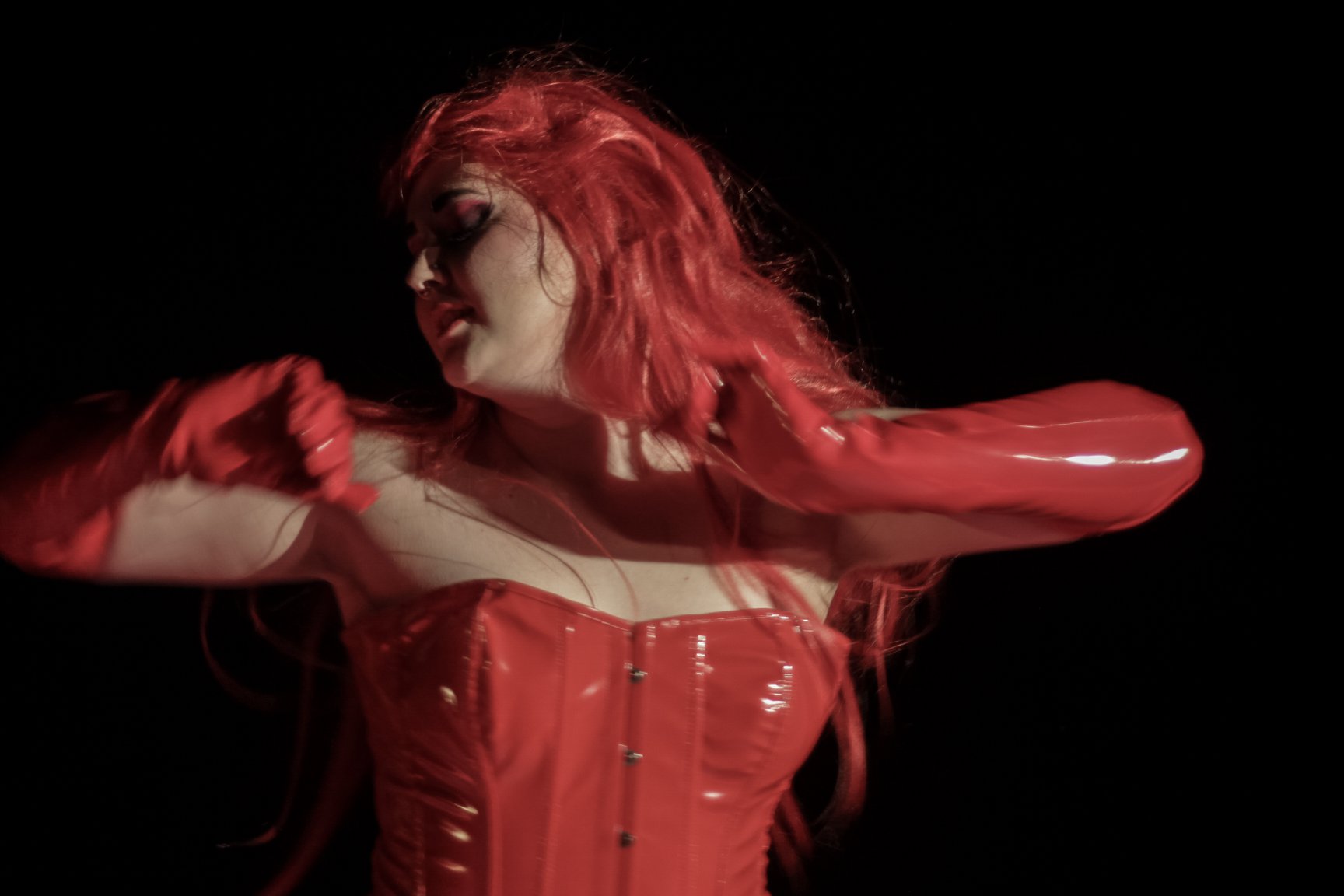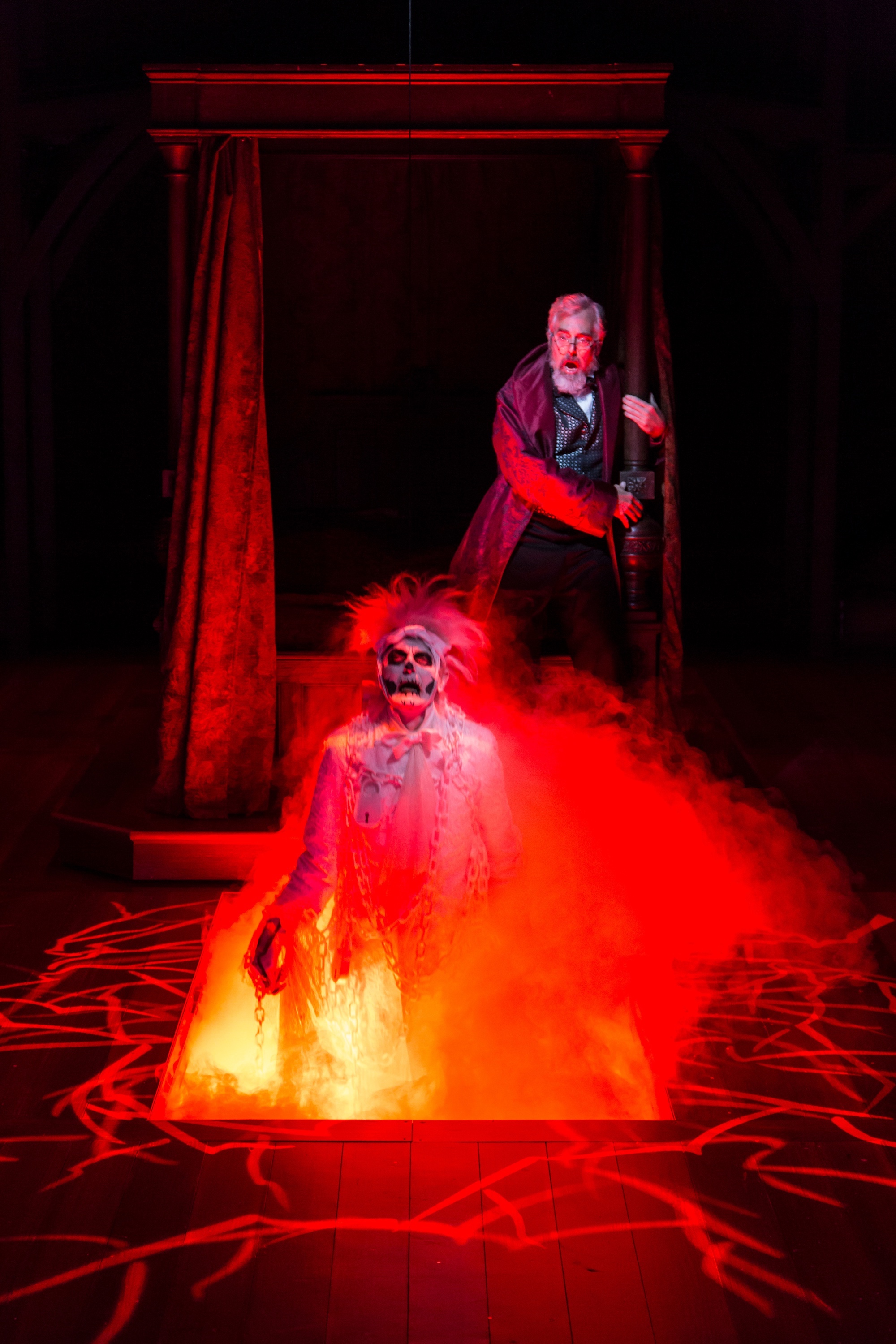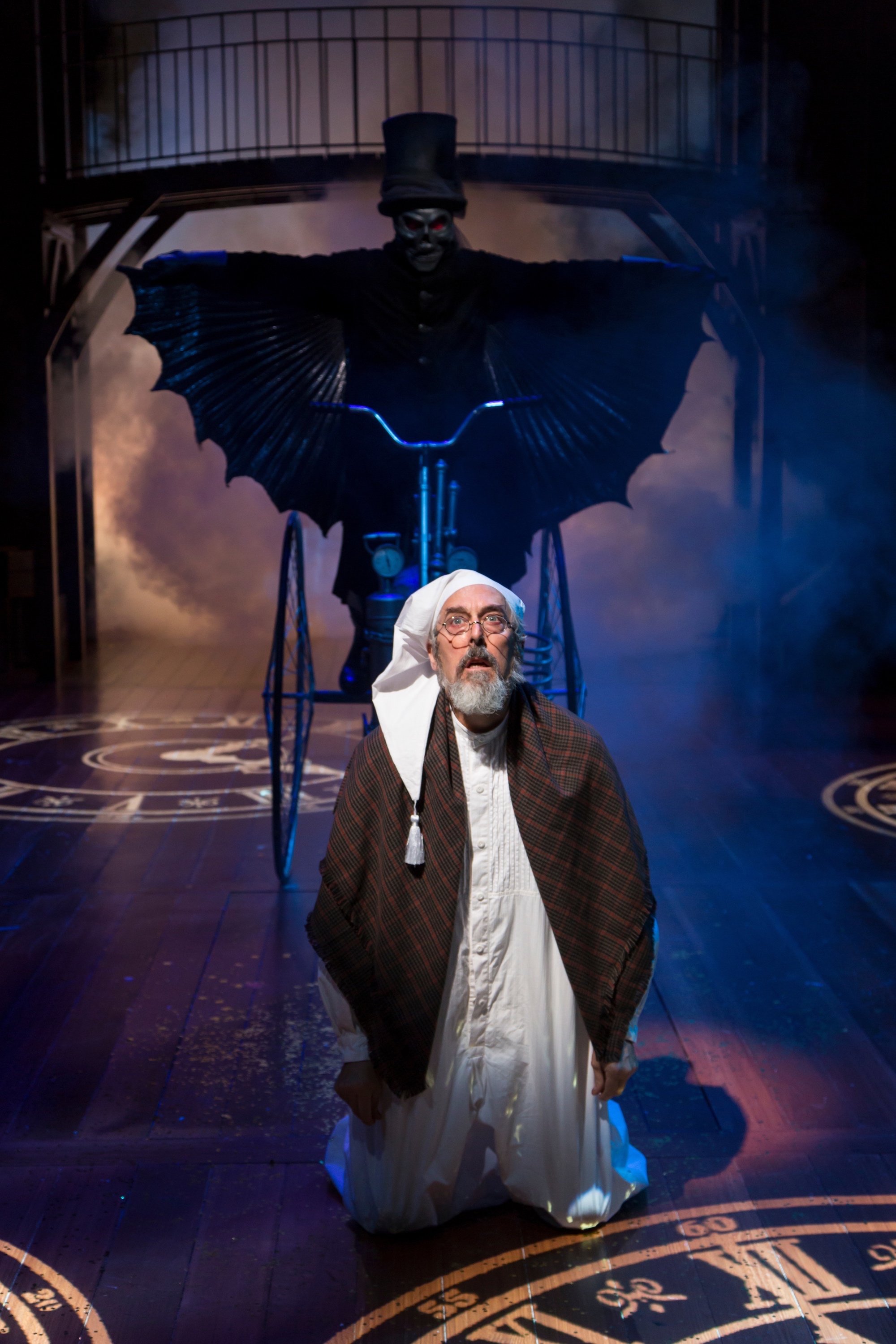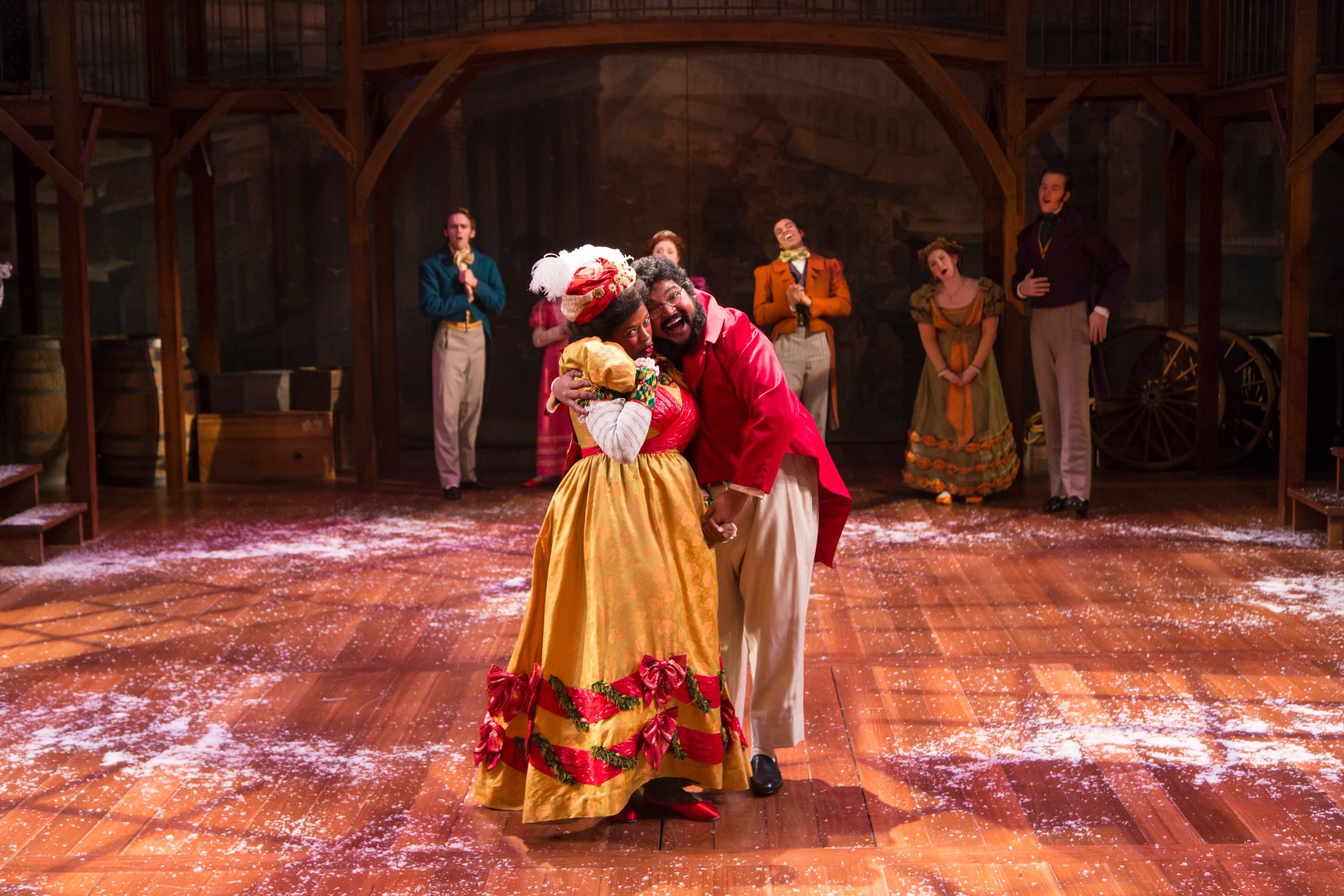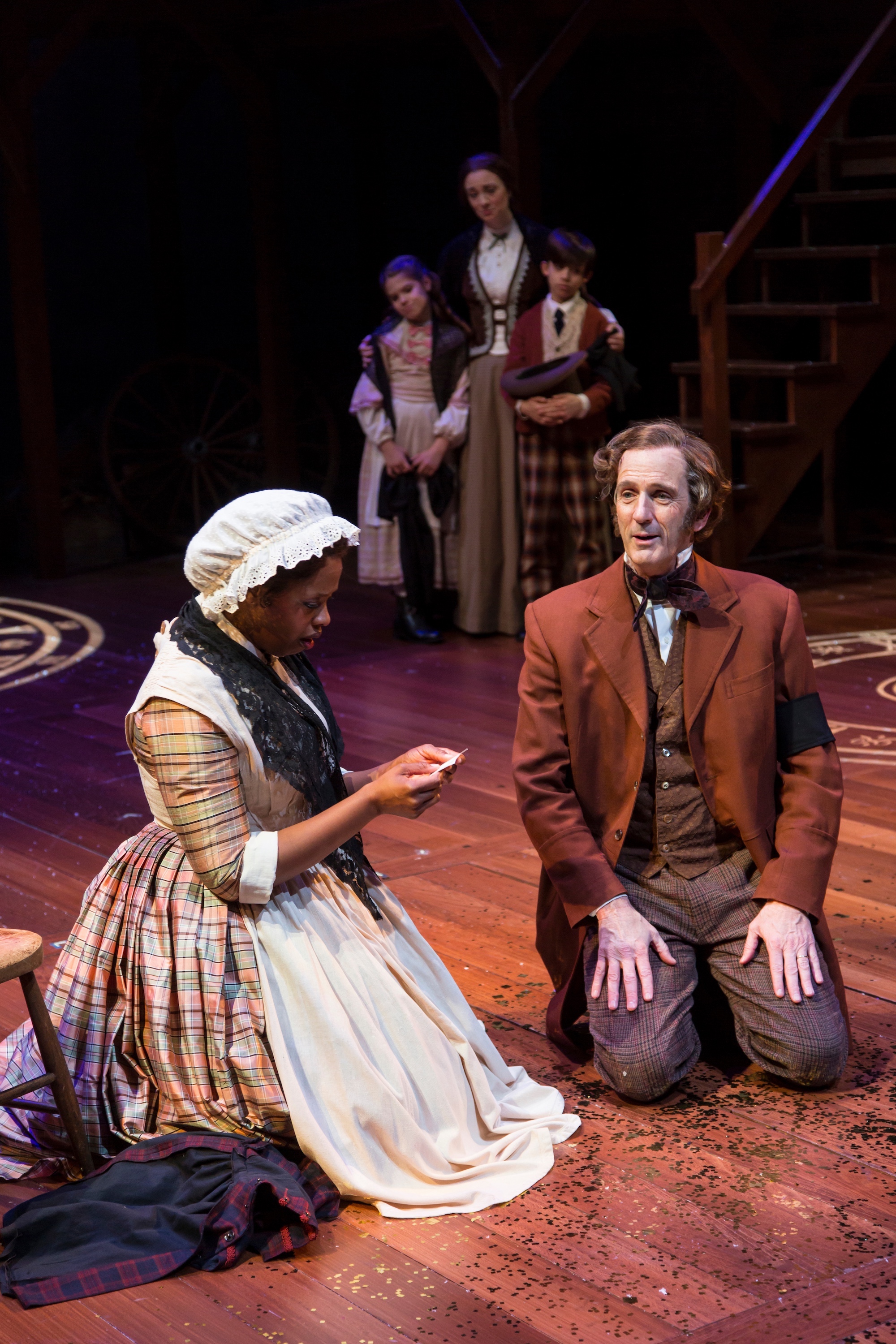Review of The Legend of Georgia McBride, TheaterWorks
Boy meets his inner girl—more or less—and performs happily ever after. That’s the essential gist of Matthew Lopez’s cheerily entertaining The Legend of Georgia McBride, a funny and breezy look at the showpersonship of drag performance now playing at TheaterWorks, directed by Rob Ruggiero.
Casey (Austin Thomas) is a would-be Elvis Impersonator whose act is dying, though he refuses to see that. His put-upon wife, Jo (Samaria Nixon-Fleming), has to give him a wake-up call when his buying a Papa John’s pizza puts them in the red and they might face eviction. The chemistry between the two is earnest in a sit-com manner where we don’t really believe the direness of the situation or see any reason not to assume that Casey will come up with something.
Eddie (J. Tucker Smith), Rexy (Nik Alexander), Casey (Austin Thomas), Miss Tracy Mills (Jamison Stern) (photos provided by TheaterWorks)
“Something” arrives in the form of Miss Tracy Mills (Jamison Stern) and his sidekick Rexy (Nik Alexander), two drag queens from out of town who have come to the bar run by Tracy’s cousin Eddie (J. Tucker Smith) to bring in the customers with their stylish show. One imagines we have RuPaul to thank for the fact that folks in a nondescript Florida beach town will flock to see drag queens flaunt their stuff. In any case, flock they do and then, one night, Rexy is too tanked to go on for her big Edith Piaf number. Tracy, with Eddie’s backing, threatens and cajoles Casey, long since demoted to bartender, into taking over, which he does with a charmingly inept lip-synch to a song that, in time, he almost manages to make his own.
All well and good, except Casey hasn’t leveled with Jo about where the money’s coming from. That, such as it is, is the main plot complication, along with the possible return to form of Rexy, which would be a shame once Casey has re-upped his sequin-studded Elvis-jumpsuit into feisty “Redneck Woman” duds. Casey likes his new persona—Georgia McBride—and much of the middle section of the show has Casey and Tracy strutting their stuff in lively fashion.
Matthew Lopez’s script is very funny, with many sharp asides, mostly in the mouth of Tracy, the drag queen as backstage den mother, who Jamison Stern plays with wit, warmth and a tight grip on making the most of the seedy dregs of Eddie’s bar. Most of the show’s sparks come from Tracy’s deft humor while dispensing tough love to her acolyte, Casey, and her flighty collaborator, Rexy, and from Stern’s drag numbers, performed in classic diva couture. One number, in which he lip-synchs memorable movie quotations, convinces us that Tracy’s show would keep 'em coming back for more.
Miss Tracy Mills (Jamison Stern)
With Casey/Georgia’s show, I’m less certain. Speaking personally, the prospect of Country-diva drag doesn’t push the same show-biz buttons, and Thomas’ Georgia, while convincing as a Country-diva, infuses his stage persona with none of the bristly charm or femme fatale naturalism that can make drag so fascinating. Casey was more beguiling as Piaf.
Much of the visual comedy comes from stuffing a straight man into woman’s clothing, with drag presented as, for some, a more authentic way of life, and, for such as Casey, a way to make a buck in a costume. It’s all about performance, sort of Tootsie meets La Cage aux Folles. The play never ventures into the murky waters of gender identity or sexual ambivalence. Casey loves his wife. End of story. The Legend of Georgia McBride isn’t about gay performativity but rather a valentine to hetero men who like to dress as women.
Miss Tracy Mills (Jamison Stern), Casey (Austin Thomas)
The problem of a wife who might not warm to a hubby as a bubbly babe gets its moment but mostly any real contentions disappear like last night’s sequins. A key argument between Jo and Casey is ably diffused by landlord/friend Jason (Nik Alexander as well) who leavens the “heavy” moment with apt comments. Alexander’s Rexy is also an asset, and the actor adds a welcome dose of cattiness to Rexy’s effort to enlighten Casey—who never seems to lose his naivete, no matter how seasoned he becomes as Georgia—about the true nature of drag. The speech may feel a bit of an editorial but it helps to let audiences register why Rexy and Casey will never be on the same page even if they’re on the same stage. Another welcome scene, with a bit more depth, lets Stern show us Tracy when she’s a he, and Stern makes the implications of the distance between Tracy’s drag persona and his offstage persona register subtly.
Rexy (Nik Alexander)
Leon Dobkowski’s costumes are numerous and eye-catching. I was having a great time noting the range of Hawaiian shirts Eddie wore over his concert T-shirt, even before he started dressing up for national holidays. Rexy and Tracy and Georgia are always a sight to behold, and Paul Tate dePoo III’s set design provides a tell-tale backstage that switches gracefully into the couple’s modest living room. John Lasiter’s lighting moves between public-space and private-space with élan, while Ed Chapman’s sound design and Ralph Perkins’ choreography make the musical numbers cook.
The Legend of Georgia McBride aims to be a crowd-pleaser and succeeds by giving everyone a good time and letting its hero have his wife and his high-heels too.
Jo (Samaria Nixon-Fleming), Casey (Austin Thomas)
The Legend of Georgia McBride
By Matthew Lopez
Directed by Rob Ruggiero
Choreography: Ralph Perkins; Set Design: Paul Tate dePoo III; Costume Design: Leon Dobkowski; Lighting Design: John Lasiter; Sound Design: Ed Chapman; Wig Design: Mark Adam Rampmeyer; Casting: McCorkle Casting; Assistant Director: Eric Ort; Production Manager: Bridget Sullivan; Stage Manager: Kate J. Cudworth
Cast: Nik Alexander, Samaria Nixon-Fleming, J. Tucker Smith, Jamison Stern, Austin Thomas
TheaterWorks
March 16-April 22, 2018





